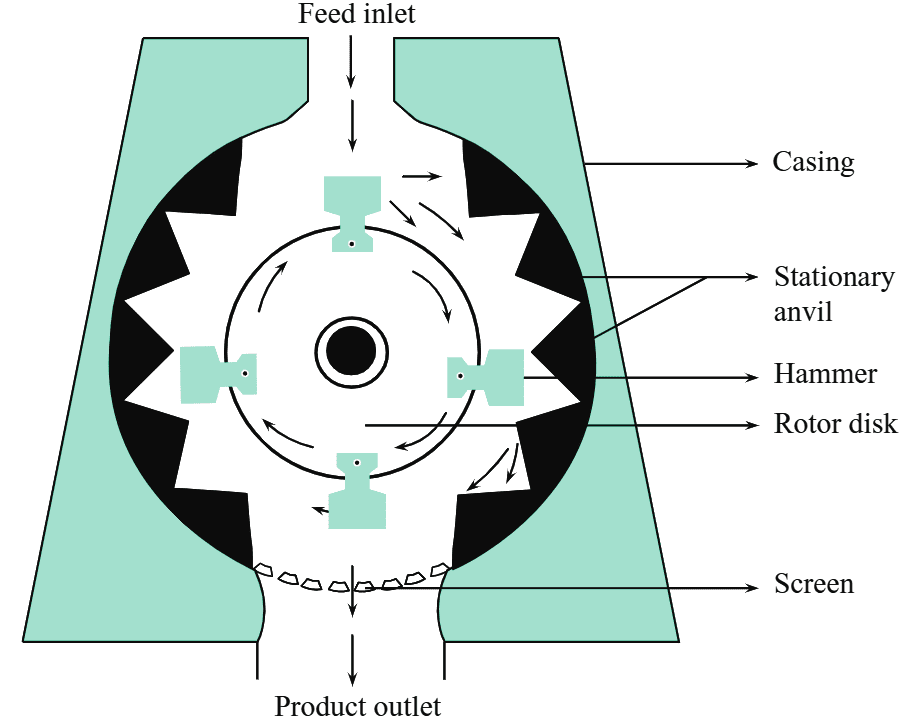
Figure 1: Hammer Mill.
Working Principle of Hammer Mill
Hammer mill works on the principle of impact for size reduction of materials. Impact is offered to the feed by the sets of swing hammers which are arranged on a rotor disk.
Construction of Hammer Mill
It consists of a casing in which a horizontal shaft is present (see Figure 1). A high speed rotor disk is attached to this horizontal shaft. A set of swing hammers are attached to the high speed rotor disk. Swinging action of the hammers is beneficial in avoiding the build-up of the material between the hammer and the screen.
Hammer mill may contain many rotor disks of diameter 150 to 450 min to which swing hammers of 4 to 8 in number are attached. The hammers are either straight with plain, enlarged or sharpened ends. A stationary anvil is arranged in the casing along its periphery. At the discharge site, a screen is present which sieves the product.
Working of Hammer Mill
Feed is introduced from the top of the mill. As the feed enters the grinding zone, it is size reduced by the swing hammers by beating. From here, the particles are further size reduced by the action of stationary anvil and by the rubbing action of hammer mill. The powder is screened and then discharged through the outlet. Several size of screens can be used depending upon the grade of fineness of the product desired.
Movement of hammer draws air into the mill, helps to nullify the heat generated during the process.
When the peripheral speed of hammer tips is 110 m/s, 0.1 to 15 tons of material is size reduced per hour to a size which passes through 200 mesh screen.
Advantages of Hammer Mill
- Easy to install and easy to dismantle for cleaning.
- Replaceable screen.
- Dust produced during size reduction and explosion hazards may be prevented as the mill is closed.
- A variety of feed can be size reduced which makes the hammer mill versatile.
- It occupies less floor space.
Disadvantages of Hammer Mill
- Only softer material can be size reduced to fines.
- The screen possesses the risk of clogging.
- Screen and the mill may get affected by abrasive feed material.
- There are chances of production degradation as the heat generated during milling is high.
- It is not suitable for fibrous, hard and sticky materials.
Applications of Hammer Mill
- Non-abrasive to moderately abrasive materials are size reduced.
- Cakes, slurries ointments filter press cakes can also be milled.
Modifications of Hammer Mill
- Fitz mill/Fitz Patrick Comminuting machine – It is used for size reduction of the materials like herbs, glands, livers, roots etc.
- Stoke Tornado Mill.